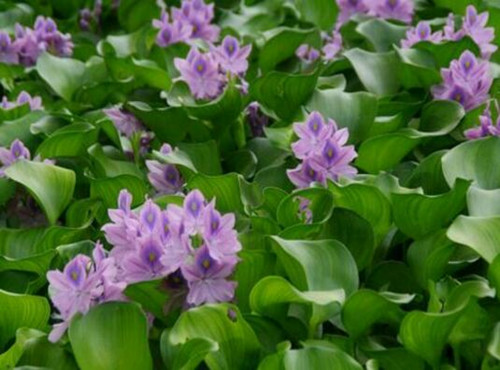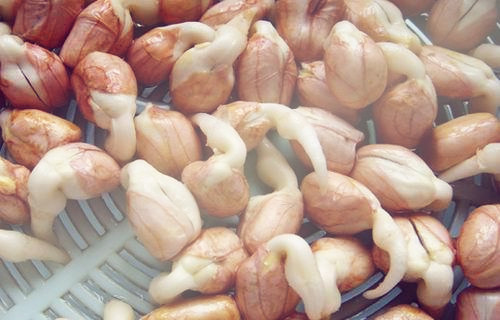What kind of plant is water hyacinth? How do you plant it? Can I eat it? What's the use?
Water hyacinth is native to Brazil. Now it is widely distributed in the Yangtze River and Yellow River basins and South China provinces. Like the warm, humid, sunny environment, adaptability is also very strong, with a certain degree of cold resistance. So, what kind of plant is water hyacinth? How do you plant it? Can I eat it? What's the use? It is understood that water hyacinth is a floating herb with well-developed whisker roots, extremely short stems, light blue flowers, multi-angled trumpet-shaped flowers, and large petals above; there is an obvious bright yellow spot in the center of the petals, shaped like Phoenix eyes, and also like the flower spot at the end of the peacock feather tail, which is very pleasing to the eye and beautiful. It is often the landscaping material in the garden waterscape. Planted in a corner of the pond, framed with bamboo, wild and quiet.

How to grow water hyacinth?
1. The choice of seedlings. New and strong plants should be selected, diseased leaves and rotten leaves should be removed and left as seedlings, and the amount of 5 kg ∕ rice should be released.
two。 Keep low temperature and inhibit the growth of seedlings. In the conservation stage, the suitable water temperature is 13 ℃-15 ℃, the temperature difference between day and night can not exceed 2 ℃ C, the growth stops below 10 ℃, the survival can be maintained at 4-5 ℃, and the death occurs when the temperature is less than 0 ℃. Therefore, in the stage of seed preservation, the indoor temperature should be prevented from being too high, preferably preserved at low temperature, so that the seedlings are dormant.
3. Get some air. Ventilation should be maintained every day to keep the air fresh in the objective existence. By late April, all doors and windows can be opened during the day and closed at 45 p.m.; 10 days before stocking, all doors and windows should be opened day and night to refine seedlings so that seedlings can gradually adapt to the natural environment and prepare for planting and breeding.
4. Keep the light. Water hyacinth has a high demand for light, and the longer the light time, the more exuberant the photosynthesis. No matter whether the climate is cold or warm, it must be illuminated for 4-5 hours a day, especially in spring. If the cover is too strict for 2-3 days, the water hyacinth will rot or even die. Therefore, the seed conservation room should open the curtain every day in order to increase indoor light and room temperature.
5. Change water and fertilize. The relative humidity of the water hyacinth protection room should be 70%, 80%. The temperature increases in spring, the wind is strong, and the water evaporates fast. at this time, the pool water should be sprayed frequently and the water should be changed regularly. generally, the water should be changed every two months, and the temperature difference of the water should not be too large. The use of low temperature seedling protection, can not change water. In addition to the protection of seedlings before the application of sufficient fertilizer, during the protection period should also often pay attention to topdressing, it is best to use rotten human feces and urine, diluted by 1:20 concentration. Do not sprinkle directly on the seedlings when topdressing.
Can I eat water hyacinth?
Water hyacinth flowers and tender leaves can be eaten directly, their taste is refreshing and refreshing, and have the effect of moistening the intestines and defecation. Indigenous people in Malaysia and other places often use the tender leaves and flowers of water hyacinth as vegetables.
What is the function of water hyacinth?
1. Water hyacinth has a strong enrichment effect on many kinds of elements, such as nitrogen, phosphorus, potassium, calcium and so on, especially for a large amount of potassium. In the existing ways of resource utilization of water hyacinth, it is relatively simple and common to compost organic fertilizer and produce biogas, and can also directly use its dry powder or the ash after combustion as fertilizer or soil improver.
two。 Water hyacinth is soft and juicy, fresh and delicious, rich in nutrition, and its dry matter is mainly crude protein, crude fat, crude fiber and so on. It can be used as an excellent feed for chickens, ducks, geese, fish and pigs. It is chopped, crushed or pulped and mixed with bran to make mixed feed or silage, which can not only improve the feed utilization rate, but also kill parasites.
3. Water hyacinth is a good plant for monitoring environmental pollution. It can monitor the presence of arsenic in water and purify harmful substances such as mercury, cadmium and lead in water. In the process of growth, it can absorb a large amount of nitrogen, phosphorus and some heavy metal elements in the water body, and water hyacinth is more effective in purifying industrial wastewater or domestic sewage containing more organic matter.
Time: 2019-03-21 Click:
- Prev

How much is the peanut sprout per jin? Why is the market not big? How did you grow it?
Like bean sprouts, peanut sprouts are rich in nutrients and contain various vitamins and trace elements, so many people will bubble their own hair, but as peanut sprouts are rarely seen in the market, the price is small and expensive, so they can only be made by themselves if they want to eat. how much is the peanut sprouts per jin? Why is the market not big? How did you plant it?
- Next

How much is 2018 loquat per jin? Can I grow it in the north? When will it blossom and mature on the market?
Loquat taste delicious, containing a variety of fructose, glucose, iron, calcium and vitamins A, B, C and other nutrients. Traditional Chinese medicine believes that loquat fruit has the effects of moistening lung, relieving cough and relieving thirst, and most people can eat it. Pond-dwelling soft strip white sand in Yuhang District, Hangzhou City, Zhejiang Province
Related
- Fuxing push coffee new agricultural production and marketing class: lack of small-scale processing plants
- Jujube rice field leisure farm deep ploughing Yilan for five years to create a space for organic food and play
- Nongyu Farm-A trial of organic papaya for brave women with advanced technology
- Four points for attention in the prevention and control of diseases and insect pests of edible fungi
- How to add nutrient solution to Edible Fungi
- Is there any good way to control edible fungus mites?
- Open Inoculation Technology of Edible Fungi
- Is there any clever way to use fertilizer for edible fungus in winter?
- What agents are used to kill the pathogens of edible fungi in the mushroom shed?
- Rapid drying of Edible Fungi

